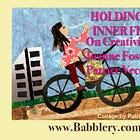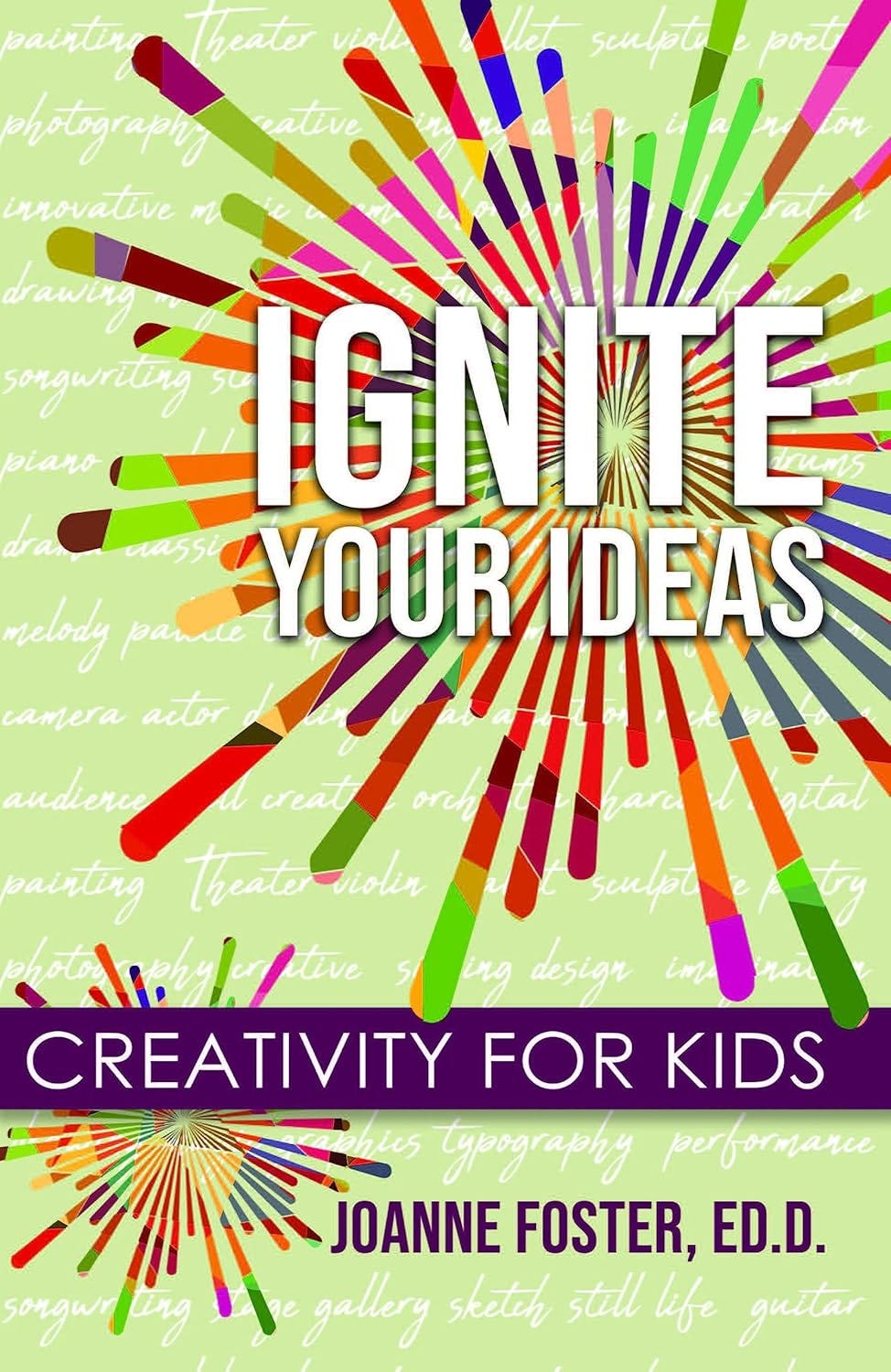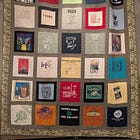Note to readers: Each month, The Babblery podcast features guests—our “translators at the Tower of Babble”—who talk about their lives, their work, and what they’ve learned in this time on earth. This guest post is by one of our June, 2025 guests, Dr. Joanne Foster. Check out the episode: “Holding the Inner Flame: On Creativity.”
Creativity—like curiosity or the ability to breathe—lies at the core of humankind. Where would we be if we couldn’t innovate and express, inquire and examine, or inhale and exhale?
In this article I focus on the power of creativity, what can threaten or squelch it, and how to maximize creative energy.
Why is creativity so important?
Creativity is a choice—and those who choose to embrace it experience myriad benefits. For example, “creators” solve problems; engage in artistic, literary, physical, and other kinds of activities; participate in exciting ventures; forge new pathways; and build relationships. Moreover, creativity is a means to extend existing ideas, to fortify learning, and to have fun. There’s joy in creating something you’ve worked on (imagined, practised, revised, designed, or constructed), and journeys and outcomes can be invigorating.
On the first page of my book Ignite Your Ideas, I write that creativity is always available if you need or want to use it. Creativity can help individuals of any age develop capacities across domains. Exercising creativity strengthens the brain. Linking and extending thoughts builds intelligence—like expanding a reservoir—consciously taking something from bland to beguiling, from mild to magical, or from simmering to sizzling. You can think things through slowly and deliberately, or seize ideas quickly or spontaneously. Creativity is limitless, and it can lead to new initiatives, discoveries, and adventures.
Creativity is an outlet for the imagination, and the wonder that lies within the soul.

So, what impedes creativity? (And how to turn that around?)
Turns out, there are lots of people—toddlers, teens, adults—who choose not to be creative. Perhaps they don’t want to leave their comfort zones, or take a chance trying something new. Maybe they lack a support network, or the resource material or equipment they need. They might be overwhelmed at the thought of a blank canvas, page, or landscape. It’s possible that the very idea of “being creative” is daunting, and/or they may be too preoccupied with responsibilities, obligations, electronic devices, and requisite “stuff” at home, in school, in the workplace, or within the community.
Choosing to avoid, put off, or reject creative expression is truly unfortunate and concerning because creativity holds the promise of possibilities. Creativity strengthens connections (neural, familial, professional, collegial), and can provide joy, solace, and a sense of purpose.
Do you consciously choose not to be creative? Here are a few simple, informal “reality check” questions. Rate yourself on a scale out of five:
I’m active and participatory.
I’m responsive when opportunities knock.
I’m resourceful.
I’m willing to boldly push beyond or sharpen the edges of what I already know.
I’m inquisitive.
If you’re happy with your answers, that’s awesome! Otherwise, how might you adapt your thinking and doing? Either way, you might go back over each of the questions, and ask yourself “how?” (That is, how am I active and participatory, responsive, resourceful, bold, and inquisitive? And how can I augment that?)
Remember, creativity can be sparked by sights, conversations, activities, people, smells, tastes, sounds… anywhere, any time, and at any stage of life… IF you are open to it. Ease or jump forward, as you wish. Determine what works best for you. Be self-aware, and live like creativity matters—because it does!
More about what squelches creativity (and what to do about it!)
“Everyone has the potential to be creative. Those who are more creative than others have learned to be so.”
~ (Ignite Your Ideas, p. 10)
There are many reasons why people struggle with creativity. For example, scrutiny; being stuck in a rut; impatience; too much complexity; too much simplicity; embarrassment; distractions; little or no progress; lack of provisions; and perceived risks. (I discuss these reasons, and offer remedies, in Chapter 5 of the aforementioned book, and I invite you to take a look.) Aside from all those points, however, here are three positive and ameliorative approaches to consider. in relation to ways people might feel vulnerable and short-circuit their own creativity. The approaches are also useful strategies to apply more broadly whenever creativity seems elusive or imperiled.
Thought #1.
Being creative is scary—I worry about unknown factors.
It’s true. Being creative can be like disturbing still waters. (What will emerge?) Or it may feel like hurtling through outer space (Where will I land?) The way forward is not guaranteed. And, others may laugh, be dismissive, poke fun, or think your ideas are weird.
Practicalities: What to do?
Find your cheerleaders—those who will support your creative endeavors by offering reassurance, encouragement, and perspective. Believe in yourself, and take a leap of faith. Strengthen your skill sets (whether it’s writing, dance, coding, sculpting, drawing, or other pursuits). Self-doubt is an enemy of creativity. Don’t let it sidetrack or frighten you!
Thought #2.
I don’t like doing art. (And, I’m not good at it.)
Creativity is not just about arts and crafts! Try different experiences at different times to see what interests you. People are most creative when doing what they enjoy. Plus, something that at first seems difficult, unusual, confusing, or uninteresting may turn out to be pleasurable or enlightening after all.
Practicalities: What to do?
There are tons of outlets for creative expression—playing a musical instrument, cooking, woodworking, photography, robotics, gardening, and so on. Give yourself the time and space to fan any sparks. Seize moments of creative energy when you feel them. Take advantage of quiet interludes if they help to energize your mind, body, or spirit. Always strive to be resilient if things become challenging. Resilience is a game changer.
Thought #3:
Creativity requires too much effort—and I just can’t…
“If you want to be the best version of yourself, don’t settle for being less, doing less, or learning less. It will compromise your intelligence, wellness, and creativity, and impede your productivity.”
~ (Ignite Your Ideas, p. 95)
Creativity doesn’t always happen in a flash, like the proverbial shining light bulb that materializes overhead. Creative thoughts and actions often take time to percolate or evolve, and hard work and perseverance are part of the equation.
Practicalities: What to do?
In Chapter 7 of my book, I reveal several different reasons why effort kindles creativity, and I offer suggestions as to how to harness that effort and push onward. Here’s a peak at why, and how to be effortful:
Effort helps creative aspirations come true. If you want to turn possibilities into accomplishments, it will require preparation, self-discipline, and exertion. Pace yourself. Figure out what you need to do, and prioritize the steps.
Effort leads to fruitful collaboration. Make connections. They can be supportive, and helpful. Network. Sharing a load, and building upon ideas, suggestions, and frameworks, can be gratifying and pleasurable.
Effort leads to greater confidence. And, confidence, in turn, can lead to successful outcomes. Congratulate yourself on any steps going forward, and think about previous achievements and how they came to be. Through effort! Fulfillment, confidence, and effort are intertwined.
Last words
Inspiration is everywhere! Be openminded, and willing to tap into—and then catapult—your creativity. Nurture your ideas, and take pride in them. Invest in your own personal growth by stretching your imagination. Above all, realize that you have the power to be as creative as you choose to be. That choice is yours.
ABOUT THE AUTHOR
Dr. Joanne Foster is an award-winning author of eight books. She has written scores of articles on a wide range of creativity-related topics for The Creativity Post online. For more information on her work, for resources on learning, creativity, productivity, and children’s well-being—and to subscribe to her newsletter—go to https://joannefoster.ca.
The Babblery can use your support. Please comment on, like, and share this post. Recommend our publication to your friends. Become a paid subscriber. Buy us a coffee. Buy Wally and Tabitha some cat food. Listen to KSQD. Be awesome and carry on.
If you enjoy podcasts, please subscribe to the Babblery on your favorite podcast platform, including Spotify, Amazon, TuneIn, Apple Podcasts, and YouTube.









